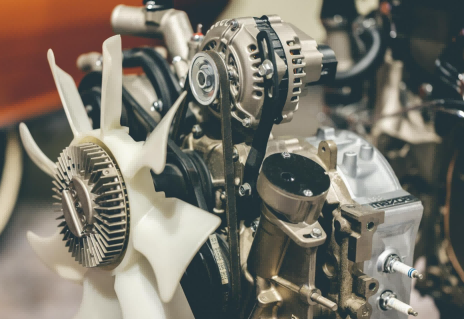 Import News
Import News
 07-10-2023
07-10-2023
In the realm of agriculture, where modern farming heavily relies on mechanization, tractors are the workhorses that drive productivity. Like any complex machinery, tractors require maintenance and replacement parts to keep them running efficiently. With the rise of global trade, the import of tractor parts has become a common practice. However, a critical question arises: Do imported tractor parts need to be purchased directly from the original manufacturer? In this article, Tendata will delve into the various aspects of this question and provide insights into the considerations for sourcing tractor parts from different suppliers.
>>>Learn More with Tendata<<<

The Landscape of Tractor Parts Imports:
Tractor parts import has gained momentum over the years, driven by the need for cost-effective solutions and the availability of a diverse range of components from various suppliers. When it comes to sourcing tractor parts, there are multiple options to consider:
1. Original Equipment Manufacturer (OEM):
The original equipment manufacturer is the company that initially designed and produced the tractor. Purchasing tractor parts directly from the OEM ensures that you are getting components that are identical to the ones installed in the original machine. This guarantees compatibility and performance, as the parts are designed specifically for that tractor model.
2. Authorized Dealers and Distributors:
Authorized dealers and distributors are entities authorized by the OEM to sell their products. These intermediaries provide the advantage of being authorized by the manufacturer, offering genuine parts and reliable support. While the parts might be slightly more expensive due to the authorized channel, the assurance of authenticity can be valuable.
3. Third-Party Manufacturers:
There are many third-party manufacturers, both domestic and international, that specialize in producing tractor parts. These manufacturers often offer compatible or aftermarket parts that can be used as replacements for OEM parts. While they might not carry the official branding, these parts can be more affordable and readily available.
>>>Improve Your Import Export Business With Tendata<<<
Factors to Consider When Sourcing Tractor Parts:
1. Quality and Compatibility:
The primary concern when sourcing tractor parts is ensuring that they are of high quality and compatible with the specific tractor model. While OEM parts guarantee this, some authorized dealers and third-party manufacturers also produce parts that meet industry standards.
2. Warranty and Support:
OEM parts and authorized dealers typically provide warranties and after-sales support. This can be crucial in case of defects or issues with the purchased parts. Third-party manufacturers might offer warranties as well, but the terms could vary.
3. Cost Considerations:
Cost is a significant factor for many farmers and tractor owners. OEM parts and authorized channels might be relatively more expensive due to the premium associated with the branding and support. Third-party manufacturers often provide more budget-friendly options.
4. Availability:
The availability of parts is essential, especially when downtime can impact agricultural operations. In some cases, third-party manufacturers might have more accessible distribution networks.
5. Application and Use:
Consider the specific application of the tractor and the intensity of its use. For heavy-duty and critical applications, sourcing directly from the OEM or authorized channels might be preferred for the sake of reliability.
Conclusion: Making the Right Choice
The decision of whether to purchase imported tractor parts directly from the original manufacturer depends on various factors, including quality, compatibility, cost, and support. While OEM parts provide a seamless fit and assured quality, authorized dealers and third-party manufacturers can also offer viable alternatives. Ultimately, the choice should align with the specific needs and priorities of the tractor owner. With careful research and consideration of all options, tractor owners can make informed decisions that ensure the continued efficiency and performance of their valuable equipment.
Customs data contains a vast amount of information, and extracting relevant customer contact information can be time-consuming. Is the outcome truly unsatisfactory, or is it due to using customs data in the wrong way, resulting in wasted effort and time?
Utilizing customs data for customer development involves accurately profiling all purchasers and their procurement systems in the target market. This approach swiftly identifies the highest compatibility customers, assesses their credit systems and procurement details, pinpoints premium customers and profit potential, enhances development efficiency, and elevates results. When developing new clients using customs data, consider the following three approaches for reference. (>>>Click to Get Free Access to Customs Data from 80+ Countries<<<)

Category
Leave Message for Demo Request or Questions


 T-info
T-info T-discovery
T-discovery

 My
Tendata
My
Tendata Market Analysis
Market Analysis Customer
Development
Customer
Development Competitor
Monitoring
Competitor
Monitoring Customer Relationship
Customer Relationship





































































































































